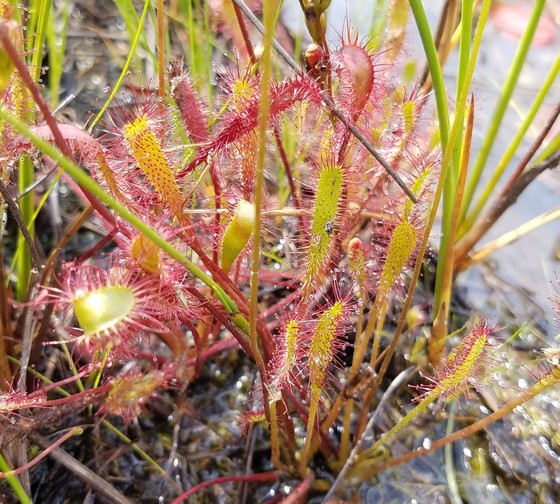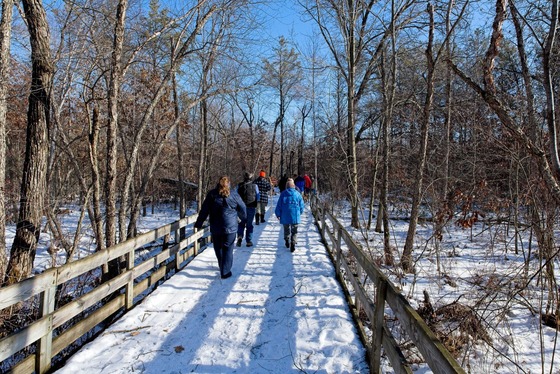Carnivorous Plant Last Seen 40 Years Ago Among Finds by Rare Plant Detectives
Rare Plant Monitoring Program Makes Record-Setting Discoveries

English sundew, one of 15 carnivorous plants in Wisconsin, was re-discovered in Ashland County for the first time in 40 years. / Photo Courtesy RPMP volunteer Dr. Sarah Johnson
MADISON, Wis. – A rare carnivorous plant last documented in Ashland County along with 59 never-before-seen populations of other rare plants in Wisconsin are among discoveries made by volunteers of the Wisconsin Department of Natural Resources’ Rare Plant Monitoring Program last year. Their discoveries are featured in the program’s recently released annual report.
Wisconsin has 2,366 native plant species and 344, or 14.5% of the total, are considered rare, meaning they are listed as endangered, threatened or special concern. Sixty trained volunteers dispatched to locations around the state last year submitted over 250 reports of rare plants they found, including 59 populations in areas of Wisconsin where they have not been documented before.
“This is the most productive year we’ve ever had from the standpoint of volunteers finding rare plants in new locations,” said Kevin Doyle, a DNR Natural Heritage Conservation botanist who coordinates the program. “These new discoveries are very exciting. They help increase our understanding of the number and locations of rare plant species so we can better monitor and protect them.”
“The information these trained volunteers collect for us is critical for understanding how rare plant populations are doing in Wisconsin and informs our next steps like research projects or management action to sustain these rare plants,” Doyle said.
Some rare plant populations observed by volunteers last year included English sundew (Drosera anglica), an insect-eating plant seen for the first time in 40 years in Ashland County as a result of good teamwork by RPMP volunteer Don and Judy Evans and the Northland College students of Dr. Sarah Johnson.
Volunteer surveys in the last year have also given the DNR a better understanding for how prairie turnip (Pediomelum esculentum), a rare legume confined to high-quality prairies, is doing in Wisconsin. Unfortunately, populations have dwindled as its habitat is neglected and degraded and the species is now regarded as imperiled.
Unfortunately, volunteers didn’t find 63 previously documented plant populations. Some have likely disappeared only temporarily as many lakes experience their highest water levels in decades and have submerged the vegetation. Regrettably, others have likely disappeared as part of a global trend in biodiversity loss.
Information RPMP volunteers have collected in past years documenting declines has spurred DNR efforts to reverse those trends. Projects include efforts to hand-pollinate rare eastern prairie white fringed orchids to boost genetic diversity and population survival, to collecting seed from some of Wisconsin’s rarest plants for long-term storage and working with local nurseries to grow federally listed plants like the northern monkshood to reintroduce to the wild.
“These efforts to address biodiversity declines can occur only because our team of rare plant monitors collect the information that tells us where to direct our efforts,” Doyle said.
NOTE: This press release was submitted to Urban Milwaukee and was not written by an Urban Milwaukee writer. While it is believed to be reliable, Urban Milwaukee does not guarantee its accuracy or completeness.
Mentioned in This Press Release
Recent Press Releases by Wisconsin Department of Natural Resources
DNR Confirms CWD in Wild Deer in La Crosse County
Dec 22nd, 2025 by Wisconsin Department of Natural ResourcesBaiting And Feeding Ban Extended




















